The art and appeal of thrifting
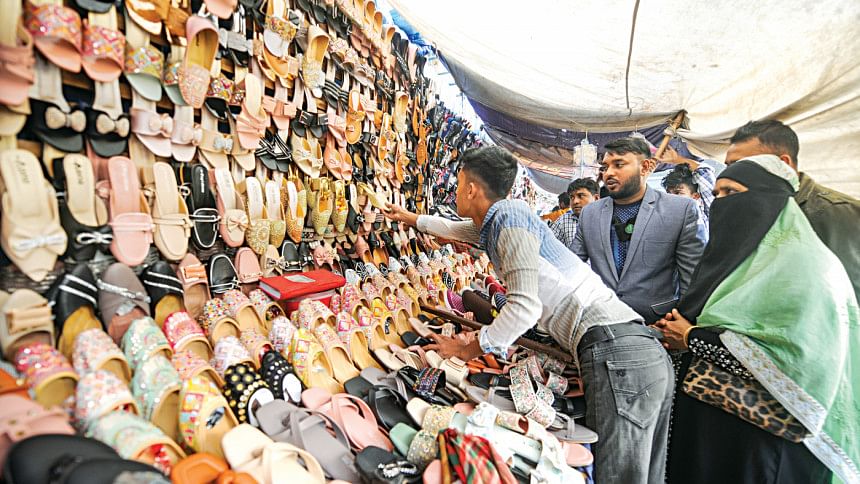
It's a typical Friday evening in Gausia Market. The narrow alleyways are alive with the voices of vendors calling out prices and shoppers haggling over deals -- piles of clothes sit atop each other. Amid the hustle, a university student proudly holds up a vintage denim jacket she just bought for Tk 300, while a middle-aged man inspects a shirt.
This is a quintessential snapshot of Dhaka's thriving street markets, powered by the growing appeal of thrifting. However, how should we define thrifting that has become a popular choice for fashion-savvy and budget-friendly shoppers alike?
THE RISE OF THRIFTING CULTURE
Thrifting, although relatively new in its modern form in Bangladesh, has its roots in the age-old culture of recycling and repurposing clothing. Bangladeshi households, for generations, have practised "thrifting" through hand-me-downs, clothing repairs, and re-using fabric for household items like "kantha" quilts.
However, the modern concept of buying second-hand fashion from thrift shops has gained momentum over the last few years.
Arifa Chowdhury, a third-year university student, shares her version of thrifting: "Growing up, I saw my mother repurpose old saris into kanthas or curtains -- so the idea of reusing clothes always felt natural. But now, with thrift stores on Instagram and events showcasing preloved items, thrifting has become more fun and fashionable."
The emergence of platforms like Facebook and Instagram has accelerated this cultural shift, allowing online thrift stores to flourish. These shops offer curated collections of preloved clothing, shoes, and accessories, often catering to a younger audience seeking stylish yet affordable options.
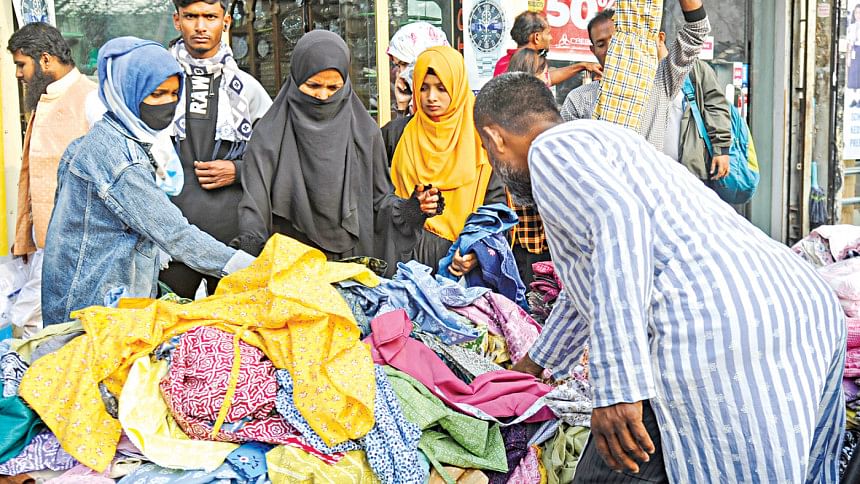
POPULARITY OF ONLINE THRIFT STORES
The emergence of online thrift stores has noticeably reshaped the way people -- especially the youth -- approach second-hand shopping. What was once limited to the chaotic but charming alleys of street markets has now expanded to the digital realm, offering curated, high-quality pieces that cater to a growing demand for sustainable and affordable fashion.
Sujana Kasfia, the owner of Mulberry Clothing, highlights, "The online thrift scene has grown incredibly fast. When I started, there were just a handful of thrift shops, but now there are so many options for people to choose from. Social media allows us to present our collections aesthetically, making it easier for customers to see the value in preloved clothes."
Thrift pop-ups and exhibitions are gaining popularity, offering shoppers a chance to interact with sellers, feel the clothing, and enjoy a community-oriented shopping experience. These events bring together multiple thrift stores and attract crowds who are enthusiastic about sustainable fashion.
Kasfia adds that participating in events like Arka Fashion Week and Dhaka Makers has been a significant boost. "The response has been overwhelming. People love the idea of finding unique pieces at affordable prices, and this keeps me motivated to continue."
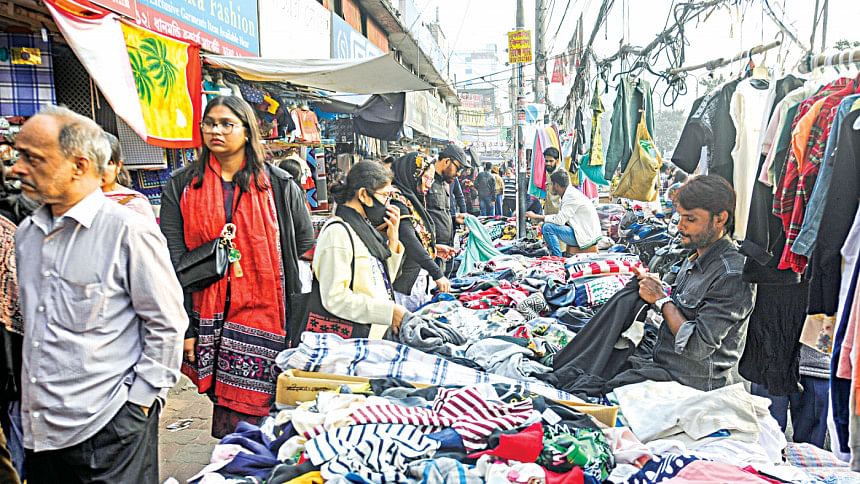
The younger generation, particularly Gen Z, seems to have embraced thrifting as a statement of individuality. They view it as a way to rebel against fast fashion, embrace vintage aesthetics, and contribute to environmental conservation.
Sadman Jayeb Farhan, owner of 500 Street Thrift, emphasises the sustainability aspect of thrifting, "Thrifted clothes mostly come from garments, and their numbers are staggering --sometimes one to two tonnes. We rummage through the clothes to pick the best ones. I think this is an excellent way to repurpose clothes, ensuring nothing goes to waste."
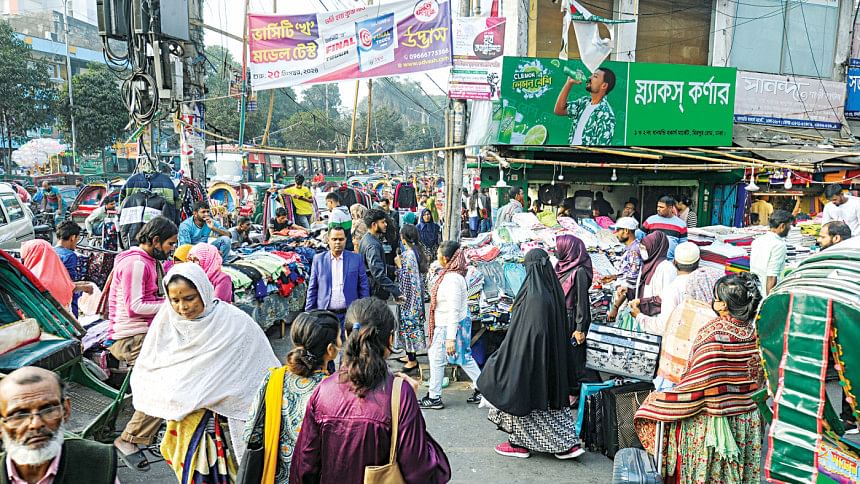
GROWING APPEAL OF THRIFTING
The growing popularity of thrifting can largely be attributed to the shoppers themselves -- people have embraced the concept for various reasons -- from affordability to sustainability.
Take, for example, Rakhee Islam, a banker and avid thrifter. She says, "For me, thrifting is like a treasure hunt. You never know what you'll find. Once, I bought a Zara coat from an online thrift store for only Tk 1,200. Plus, it feels good to know I'm reusing something instead of contributing to waste."
In a world where fast fashion often results in mass-produced, cookie-cutter designs, thrifting offers a chance to stand out. Shoppers can piece together looks that reflect their personal style, incorporating one-of-a-kind finds into their everyday wear. More importantly, the affordability of thrifted clothes also makes them appealing to those on a budget, such as students and young professionals. However, even for those who have the means to shop at retail stores, thrifting offers an exciting and cost-effective alternative.
Thrifting has also become a social activity, particularly among young people. Groups of friends often visit thrift markets or shop together online, sharing tips on how to find the best pieces or style them.
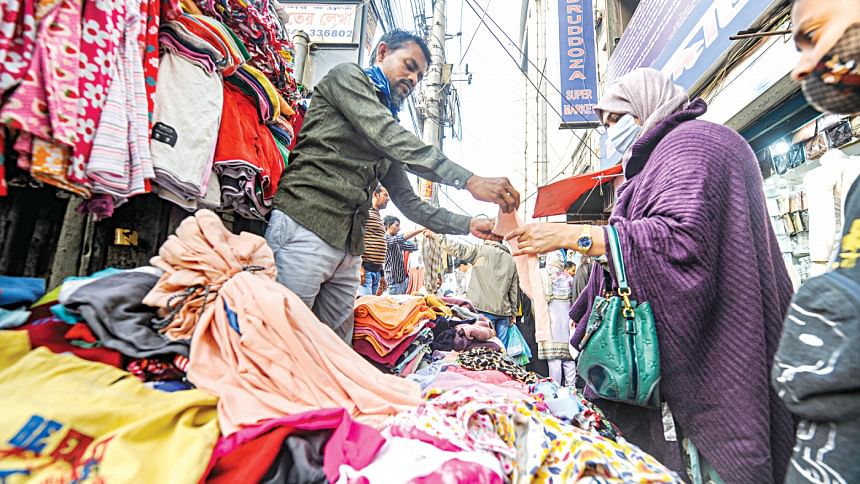
Despite its growing popularity, thrifting in Bangladesh is not without challenges, as Farhan notes, "Men often have fewer choices in thrift shops compared to women, although this is slowly improving." Pricing and quality control can vary widely, making it important for shoppers to be vigilant.
Although the acceptance of thrifted clothes has grown, some hesitation still lingers. The idea of wearing someone else's clothes carries a stigma for certain shoppers, especially in more traditional communities.
Kasfia observes, "While acceptance is growing, some people still hesitate to buy second-hand clothes. Cultural attitudes toward pre-loved items often associate them with financial necessity rather than conscious choice."
On this note, Farhan emphasises, "As long as the clothes look good and you feel comfortable, there's no harm in wearing pre-loved clothes. It's good for your wallet and the planet."
Challenges will persist, but it is clear that thrifting continues to grow in popularity. It's about embracing individuality, making conscious choices, and finding joy in the journey of discovery. Whether it's through exploring the alleys of Gausia Market or scrolling through an Instagram thrift store, the allure of thrifting lies in its ability to transform fashion into something personal, meaningful, and sustainable.
WHERE TO SHOP?
The street markets in the New Market area remains the epicentre of thrifting for most shoppers. However, one of the lesser-known but increasingly popular spots for thrifting is the street market near HOPE International School in Mirpur 10. This place has gained recognition for offering affordable and diverse options.
The rise of online thrift stores has revolutionised second-hand shopping in Bangladesh. Platforms like Mulberry Clothing, 500 Street Thrift, and others curate collections of preloved items, ranging from branded clothing to vintage fashion pieces.
The appeal of online thrift stores lies in their convenience and accessibility. Shoppers can browse through beautifully photographed items, read detailed descriptions, and shop from the comfort of their homes.
So, whether you are a seasoned thrifter or someone looking to dip their toes into the world of preloved fashion, these markets and platforms offer endless possibilities. The growing thrift culture in Bangladesh proves that second-hand shopping is not just a trend -- it's a lifestyle choice that's here to stay.

 For all latest news, follow The Daily Star's Google News channel.
For all latest news, follow The Daily Star's Google News channel. 
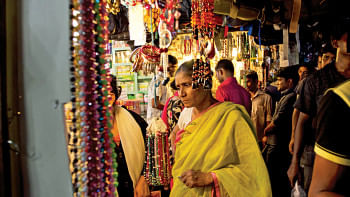






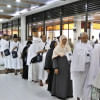

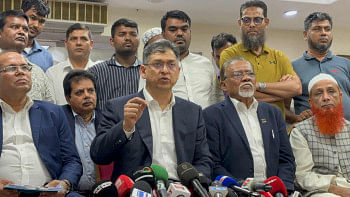
Comments